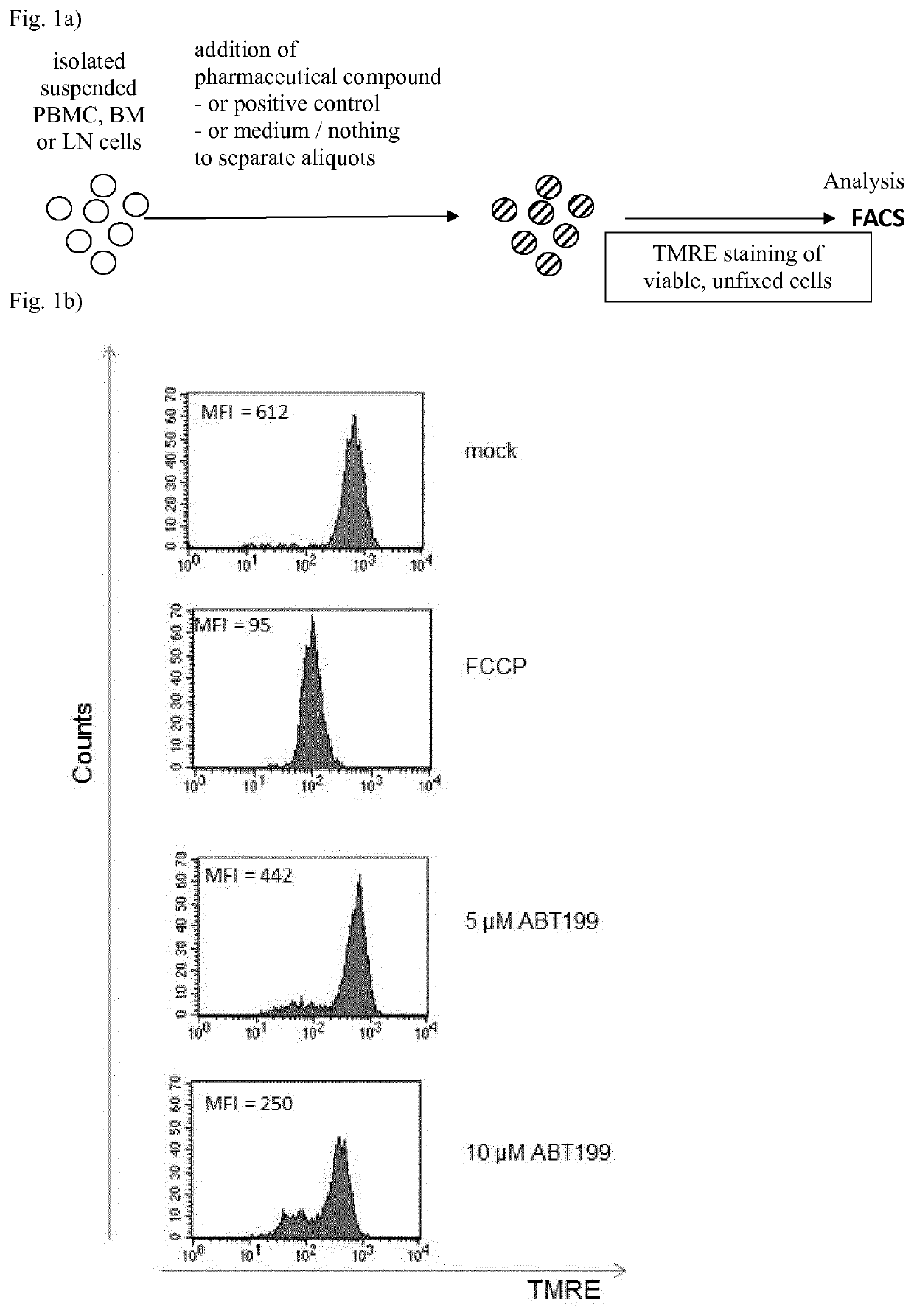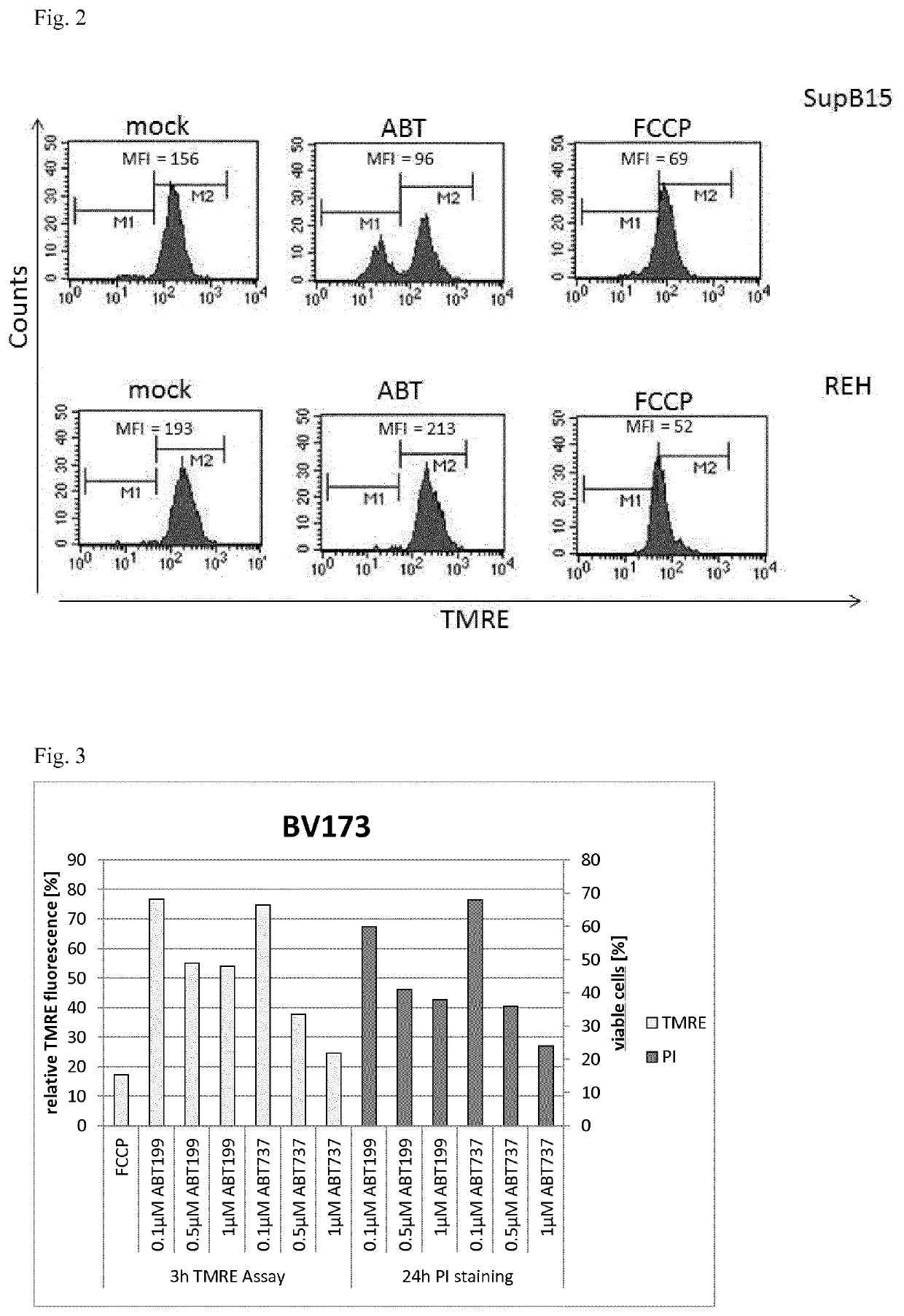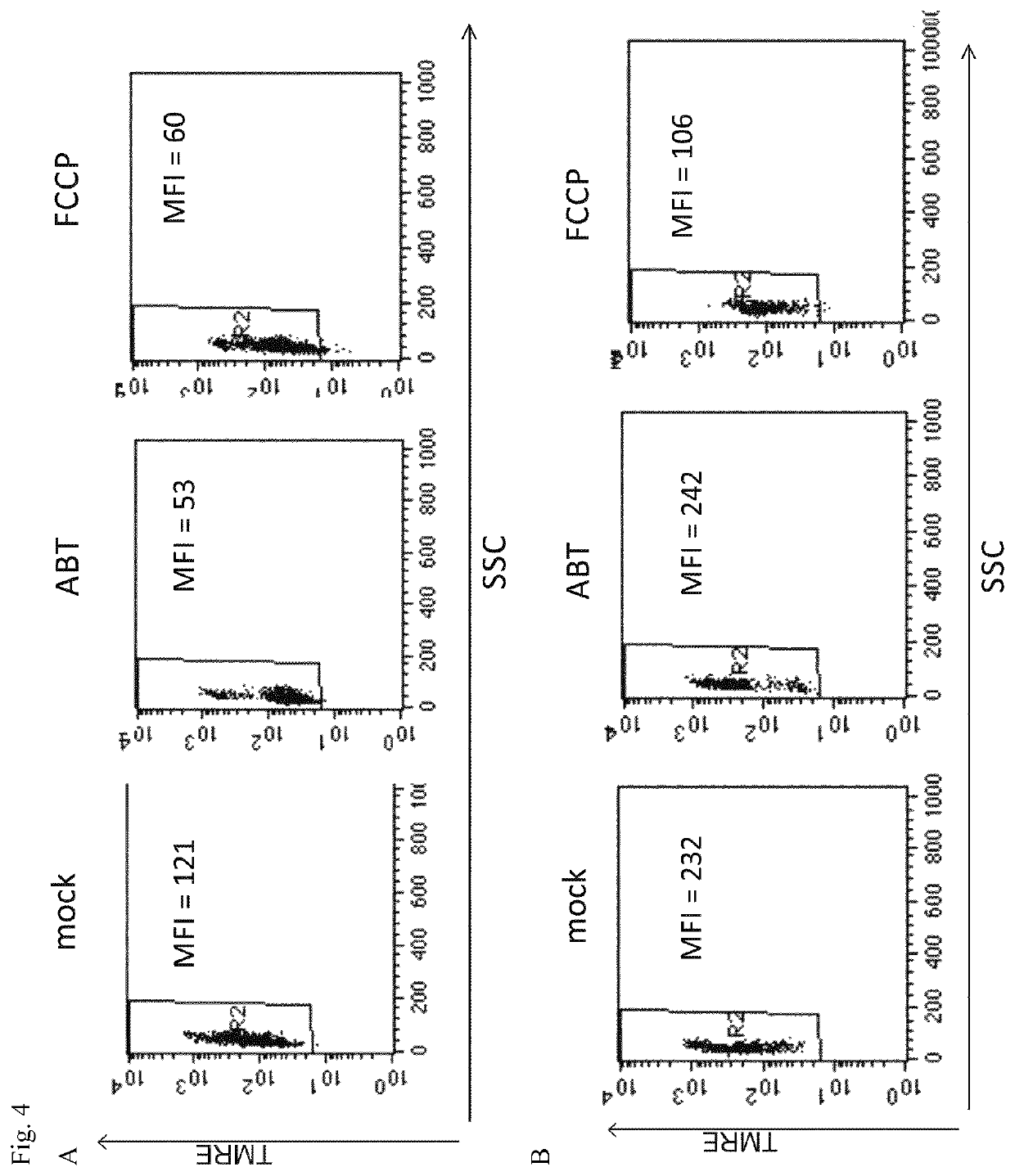Analytical process for predicting the therapeutic effect of BH3 mimetics
a technology of bh3 mimetics and analytic process, which is applied in the field of analytic process for predicting the therapeutic effect of bh3 mimetics, can solve the problems of limited life span of leukemic blast cells in vitro from peripheral blood, bone marrow or lymph nodes, and achieve the effect of reducing the risk of leukemic blast cells in vitro
- Summary
- Abstract
- Description
- Claims
- Application Information
AI Technical Summary
Benefits of technology
Problems solved by technology
Method used
Image
Examples
example 1
NT OF SUSCEPTIBILITY OF CELL LINES FOR APOPTOSIS
[0053]As representatives for isolated PBMC, BM or LN mononuclear cells, the B-ALL cell lines SUP-B15, which expresses BCR-ABL (BCR-ABL-positive), and the BCR-ABL negative REH were used in the analytical process in suspension in cell culture medium RPMI1640. As a positive control for MOMP, FCCP was added to 5 μM to one aliquot, as a negative control an aliquot of the suspended cells was used with addition of the same volume of physiological saline, and ABT-199 was added to 10 nM final concentration. After incubation at 37° C. for 3 h, TMRE was added to a final concentration of 50 nM and the aliquots were incubated for further 15 min at 37° C., in a 5% CO2 atmosphere each time. The measurement results by FACS are shown in FIG. 2. For the aliquots containing ABT-199, the MFI is reduced by approx. 40% in the BCR-ABL positive SUP-B15 cells, but for the BCR-ABL negative REH cells, the MFI essentially remains unaffected by ABT-199 in comparis...
example 2
NT OF SUSCEPTIBILITY OF PBMC FOR APOPTOSIS
[0055]PBMC were isolated by density gradient centrifugation using Biocoll from the heparinized blood sample of a patient diagnosed to have CLL (ABT-199, Venetoclax, is approved for treatment of CLL with 17p-deletion). As a comparison, PBMC from a healthy donor were isolated. PBMC were suspended in RPMI1640 cell culture medium and transferred as aliquots into separate tubes, to which ABT-199 was added to a final concentration of 1 μM and incubated at 37° C. for 3 h in a 5% CO2 atmosphere. Subsequently, TMRE was added to 50 nM and aliquots were further incubated for 30 min, then analysed by FACS according to the invention. As a negative control (mock), physiological saline was added, as a positive control FCCP to 5 μM (FCCP).
[0056]FIG. 4A shows the results for PBMC from a CLL patient, FIG. 4B shows the results for the PBMC from healthy blood sample. The results demonstrate that after 3 h incubation, the PBMC from the CLL blood sample, the pres...
example 3
NT OF SUSCEPTIBILITY OF PBMC FOR APOPTOSIS
[0058]PBMC or BM mononuclear cells were isolated by density gradient centrifugation from blood or bone marrow samples originating from patients who were newly diagnosed as ALL (n=12), from blood or bone marrow samples originating from CML patients in chronic phase (CML-CP, n=7), and from blood samples obtained from healthy volunteers (n=6). In accordance with the analytical process, PBMC or BM cells were incubated in cell culture medium with ABT-199 added to 1 μM for 3 h at 37° C. in a 5% CO2 atmosphere for cell culture conditions, followed by addition of TMRE to 50 nM and incubation for another 30 min, then analysed by FACS for fluorescence by TMRE.
[0059]The results are shown in FIG. 5, indicating essentially no induction of apoptosis for the PBMC from healthy donors, a strong induction of apoptosis for the PBMC or BM cells from these ALL samples (ALL), and essentially no induction of apoptosis for the PBMC or BM cells from the CML-CP patie...
PUM
| Property | Measurement | Unit |
|---|---|---|
| survival time | aaaaa | aaaaa |
| survival time | aaaaa | aaaaa |
| survival time | aaaaa | aaaaa |
Abstract
Description
Claims
Application Information
 Login to View More
Login to View More - R&D
- Intellectual Property
- Life Sciences
- Materials
- Tech Scout
- Unparalleled Data Quality
- Higher Quality Content
- 60% Fewer Hallucinations
Browse by: Latest US Patents, China's latest patents, Technical Efficacy Thesaurus, Application Domain, Technology Topic, Popular Technical Reports.
© 2025 PatSnap. All rights reserved.Legal|Privacy policy|Modern Slavery Act Transparency Statement|Sitemap|About US| Contact US: help@patsnap.com



